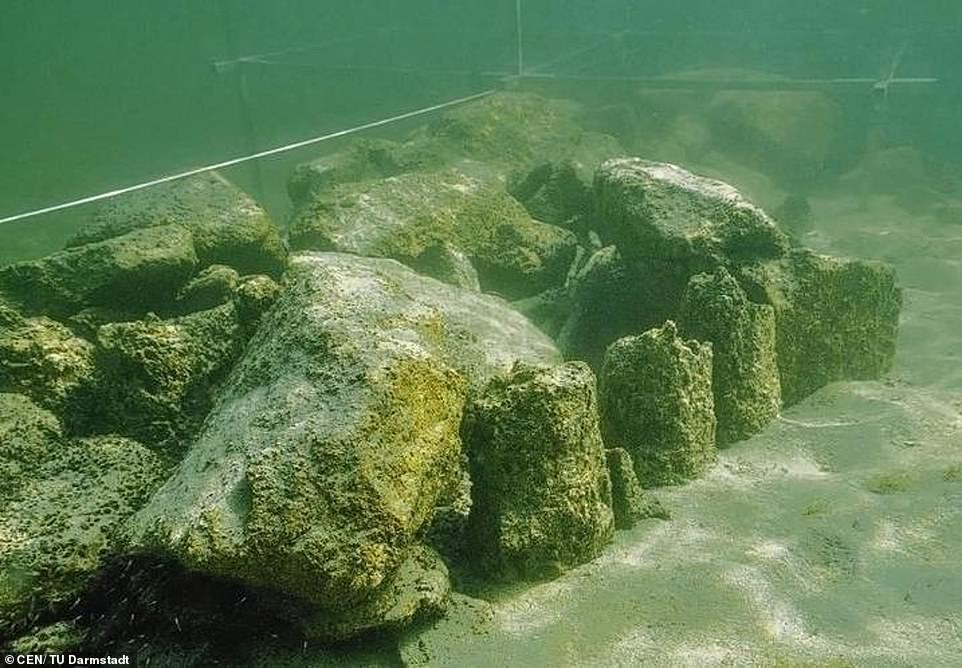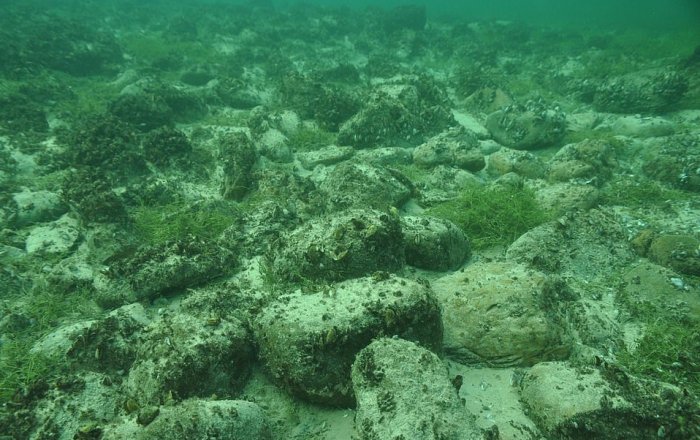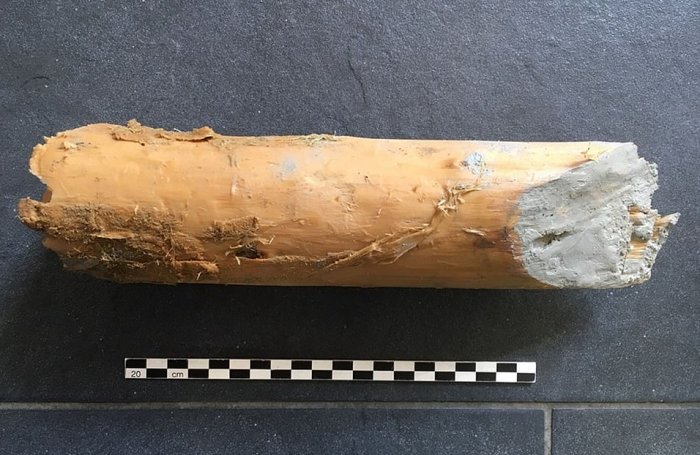Stunning Swiss Stonehenge Discovered Underwater
Archaeologists claim that a range of mysterious man-made stones submerged beneath the surface of a European lake is 5,000 years old. Local media reports that the so-called ‘Swiss Stonehenge’ sits 15feet down at the bottom of Lake Constance and is a Neolithic relic, with stones ranging in size up to around 100 inches wide.
The man-made piles of stones were found on the Swiss side of the lake, a 207-square-mile body of water on the borders of Switzerland, Germany and Austria.
Each stone was located at regular intervals running completely parallel to the Swiss shoreline. A spokesman at the Archaeology Office of the Swiss Canton of Thurgau described the findings as ‘sensational’ after carrying out excavations of the lake bed.

A ship equipped with a digger with a 15-metre-long arm removed material alongside the stones to reveal them for study. Analysis of how they were placed shows they were put down by humans and not by nature, archaeologists claim.
Using underwater georadar developed by the Technical University of Darmstadt in Germany, the team of scientists managed to study the lake’s sediment and stone deposits in search of the origin and purpose of the formations.
The Archaeology Office wrote: ‘With high-frequency electromagnetic pulses, the hidden layer of the lake bed in the vicinity of the stone structures was recorded.’
‘It is obvious that the stones of up to 40 centimetres in size rest on the post-glacial, banded lake deposits and clearly above the underlying upper edge of the moraine [a glacially formed accumulation of unconsolidated glacial debris].
‘Thus, it is now scientifically proven that the cairns did not originate naturally from the glacier, but were piled up by human hands.’

The spokesman added: ‘The first results produced using carbon dating show that the stones in area 5 were placed there around 5,500 years ago in the Neolithic period.’
In the following months, further investigations will be carried out with the hope of discovering more about the artefacts, which will be analysed by an international team of researchers.
Initially, it was unclear whether the stones were natural formations from the remnants of a glacier which was located in the area 18,000 years ago. The researchers had originally suspected that the formations were from the Bronze Age dating back to around 1000 BC.

Currently, there are various theories about the purpose of the stones, such as that they served as weirs, burial mounds or signposted transportation routes.
Urs Leuzinger, a researcher on the project, estimates that at the time of construction, the cairns were located along the shoreline or even in shallow water.
He said: ‘I’ve never really experienced anything like this. Whenever we dig something up, we usually know what it’s all about.’
He said that his team ‘has no intention to compete with the original Stonehenge’, saying that the moniker had been ‘chosen by German media’ and not by archaeologists.
However, he said that there are some similarities with the Wiltshire monument as it required an equally impressive feat by prehistoric humans to transport such stones.
Dr Leuzinger said: ‘After all, our 170 cairns of 500 cubic metres of stones each does bring quite a decent amount to the shores of Lake Constance.’
The cairns were first discovered in 2015 by the Institute for Lake Research in the town of Langenargen in the south-western German state of Baden-Wuerttemberg.
It is thought they would have been near to a settlement of lake dwellings which are much deeper underwater perhaps close to what was once a prehistoric shoreline and are yet to be discovered, according to the Thurgau Office for Archaeology.
But they added: ‘It may also be the case that the lake dwellings have already eroded away due to the erosion over the years.’





